Doing Life With… is a BellaNaija Features series that showcases how people live, work, travel, care for their families and… everything in between. We are documenting the lives of all people and ensuring everyone is well-represented at BN.
Did you miss our conversation with Suo Chapele? You can catch up here.
Today, we’re doing life with Andrew Esiebo, an accomplished visual storyteller whose photography has won the Visa Pour La Création Prize by France’s Institut Français as well as the Artistic Creation Prize by the Musée du Quai Branly. He has received several nominations including the Prix Pictet, Magnum Emergency Fund, Sovereign African Art Prize, CAP Prize for Contemporary African Photography, and the Joop Stewart Masterclass. Enjoy!
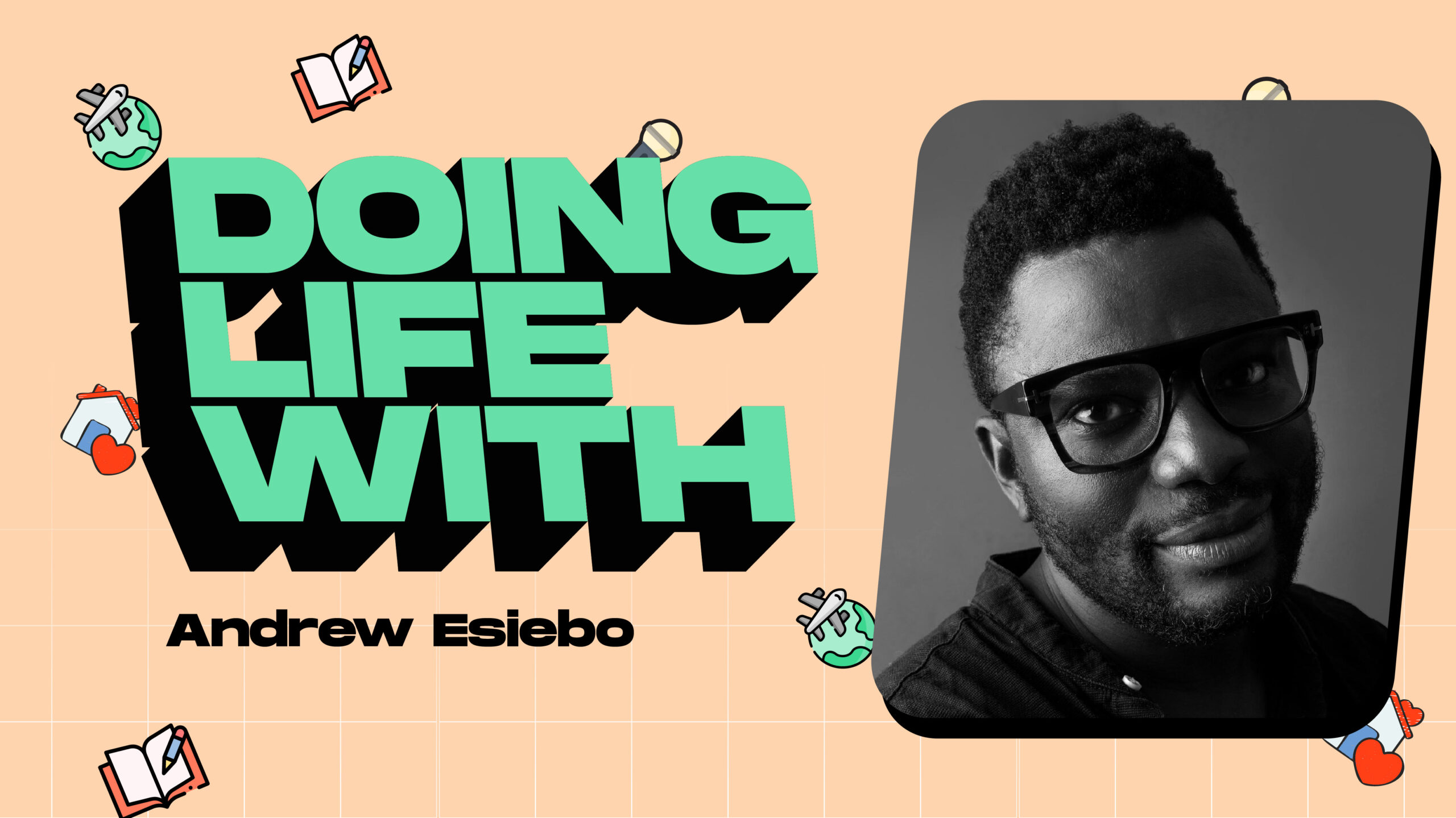
Hi Andrew. How are you feeling today?
I’m feeling great and can’t complain.
Give us a peep into your background and aspects of your childhood that influenced who you are today
I grew up in a typical working-class family that greatly emphasised education, discipline and moral values. I was always drawn to nature, adventure, and art as a child. I expressed this through gardening in the backyard, staying curious about the world around me, and drawing. I often scored top marks in school for my drawing and fine art exercises. However, coming from a home where traditional careers like engineering, medicine, and accounting were expected, I didn’t receive much support for my artistic passions.
That changed when I became independent. I worked at a bookstore in Ibadan, which had a good collection of art and photography magazines. This rekindled my interest in art, and I would spend hours reading photography magazines, dreaming of creating similar pictures someday. Fate smiled at me when a friend gifted me an old Nikkormat analogue camera in 2001, and that’s when my photography journey began. I started capturing images with a deep interest in exploring nature, culture, and urban life. By 2006, I got my first major opportunity to travel across Nigeria, documenting the country’s cultural and natural heritage. From then on, photography became not just a career but a way of life — a lens through which I witness the world around me.
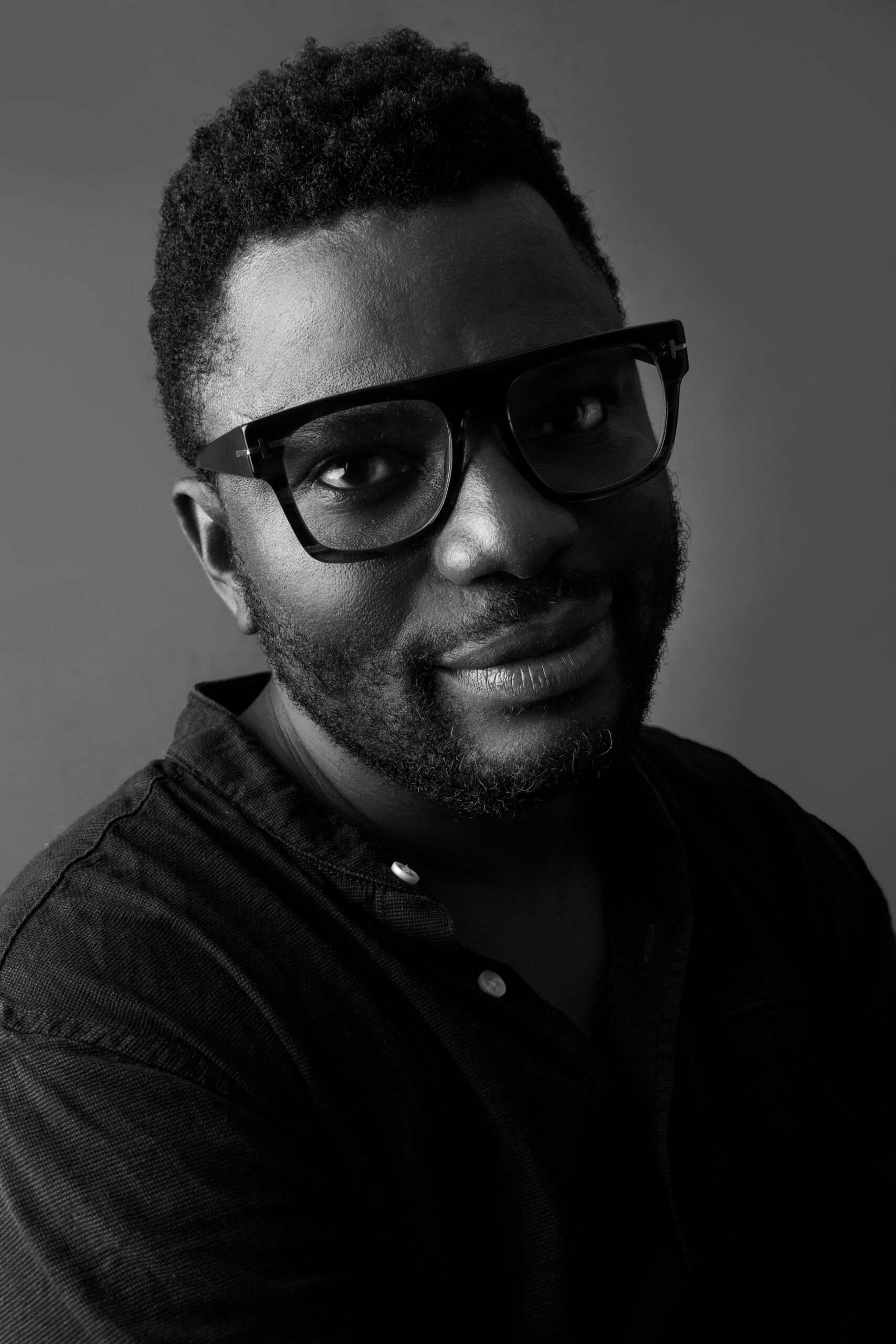
Andrew Esiebo
You explored different themes through photography — urbanisation, gender, migration, and more — which one has left the deepest impact on you, and why?
All the themes I’ve explored have profoundly impacted how I engage with spaces and people. They’ve made me more knowledgeable, tolerant, and empathetic. For instance, my project on football in informal spaces made me realise how deeply ingrained the love for football is in African cities. People create makeshift spaces to play the game, which also makes me reflect on how cities are structured and the urban challenges we face.
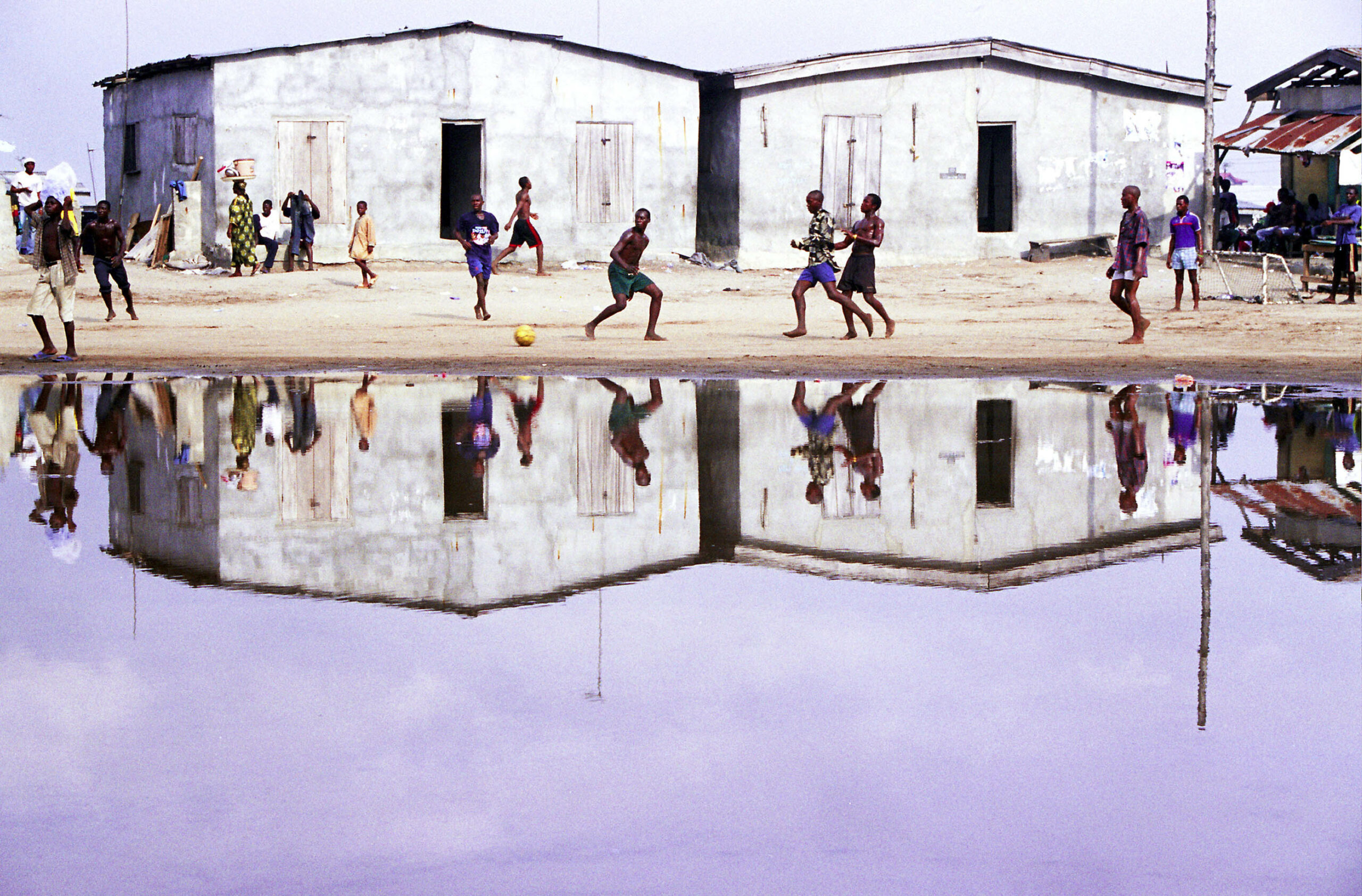
Maracanna staudium, Ajegunle, Lagos. By Andrew Esiebo
My series “Alter-Gogo” in South Africa, which examines the dual role grandmothers play through soccer, gave me a deeper appreciation for the strength and versatility of women. On the field, they are assertive and powerful, yet at home, they are caregivers. These insights have changed how I see gender roles. My “Nigeria on My Mind” project, which took me across the country, allowed me to explore Nigeria’s rich cultural diversity and natural beauty. Through photography, I feel blessed not only to pursue a career but to engage in a practice that constantly opens my eyes to the world.
Also, a recent multidisciplinary project titled “Pneuma-city,” I worked where I visually explored the journey of second-life tyres within the heart of Lagos. This project made me more aware of the economic, environmental, and labour impacts of end-of-life tyres in the city. It highlighted the crucial yet often overlooked role that tyres and vulcanizers play in the daily mobility and functionality of Lagos. Through this exploration, I gained a deeper understanding of both the importance and challenges surrounding tyre recycling and the livelihoods of those who rely on this vital resource to keep the city moving.
Your work often captures the resilience and vibrancy of African societies. How do you think art, especially photography, can contribute to changing narratives about Africa?
Art, especially photography, acts as a mirror of our society. It can be used to show the full spectrum of daily life — the good, the bad, the ugly, the joy, resilience, potential, and wealth of the continent. We can help people better understand Africa’s realities by presenting a balanced narrative. Photography allows us to appreciate the challenges and find ways to make the continent a better place for everyone.
What’s the most important lesson you’ve learned about human nature through photographing people in various parts of the world?
I’ve learned that humans are incredibly resilient and adaptable. It amazes and inspires me how, even in the most challenging circumstances, people find a way to push forward. A great example is Lagos: despite the difficulties faced by the masses, there is still determination, resilience, hope, and even moments of joy. In my “Lagos Vibrations” series, I capture people commuting to work amidst the daily grind, and in “Highlife,” I show how, despite these struggles, people still find time to celebrate and enjoy life.
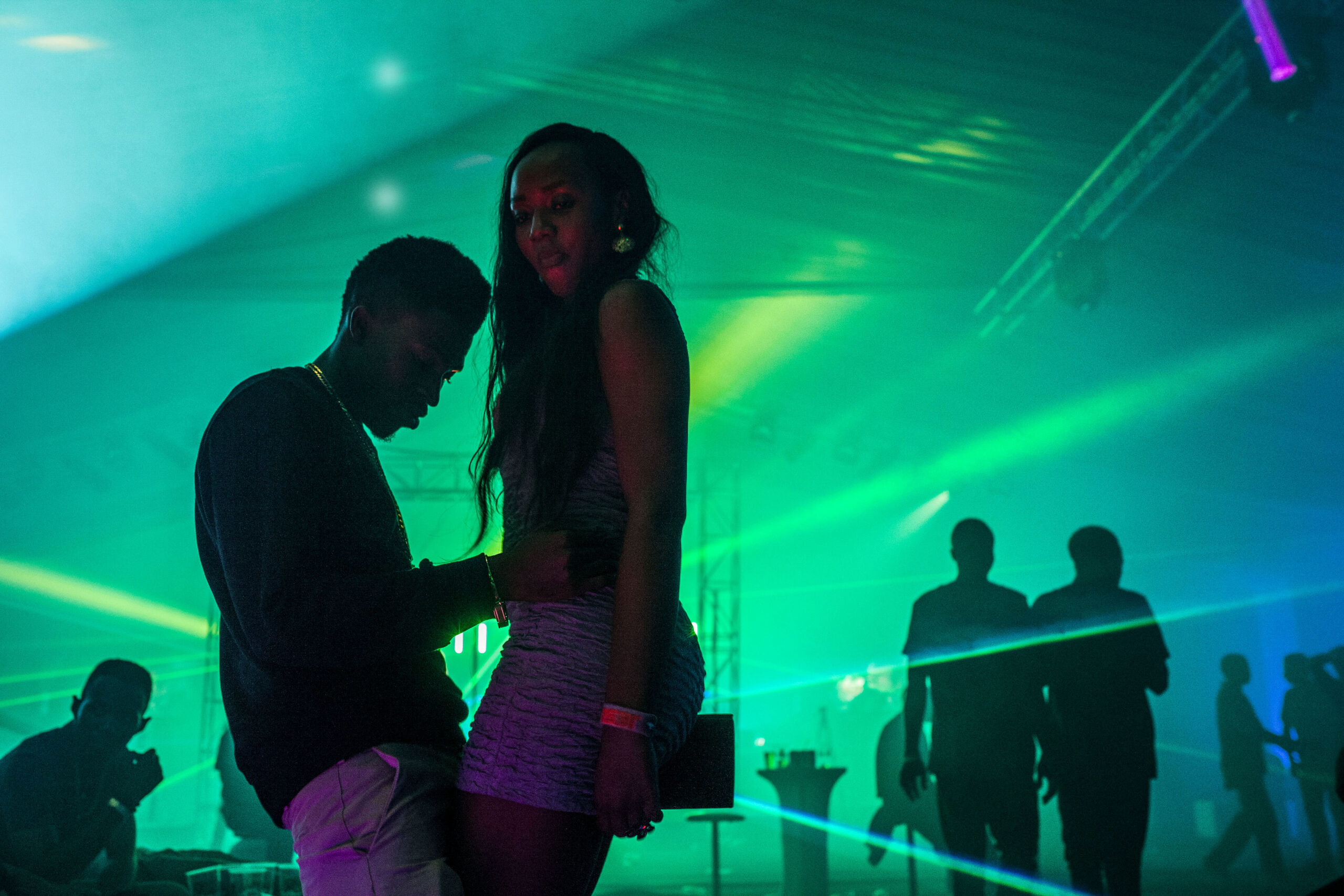
Dancing time at the Ultimate Club DJs battle party at the former Ocean View bar and restaurant in Victoria-Island, up-market district of Lagos. By Andrew Esiebo
In a rapidly digitalising world, how do you see the future of documentary photography and its role in social change?
Documentary photography is the art of capturing and showing the realities of people, places, and events. It has always been, and will continue to be, essential for humanity. As technology evolves, so will the production, distribution, and consumption of documentary photography. However, its relevance to social change will remain, as there will always be a need to document the human experience and push for societal progress.
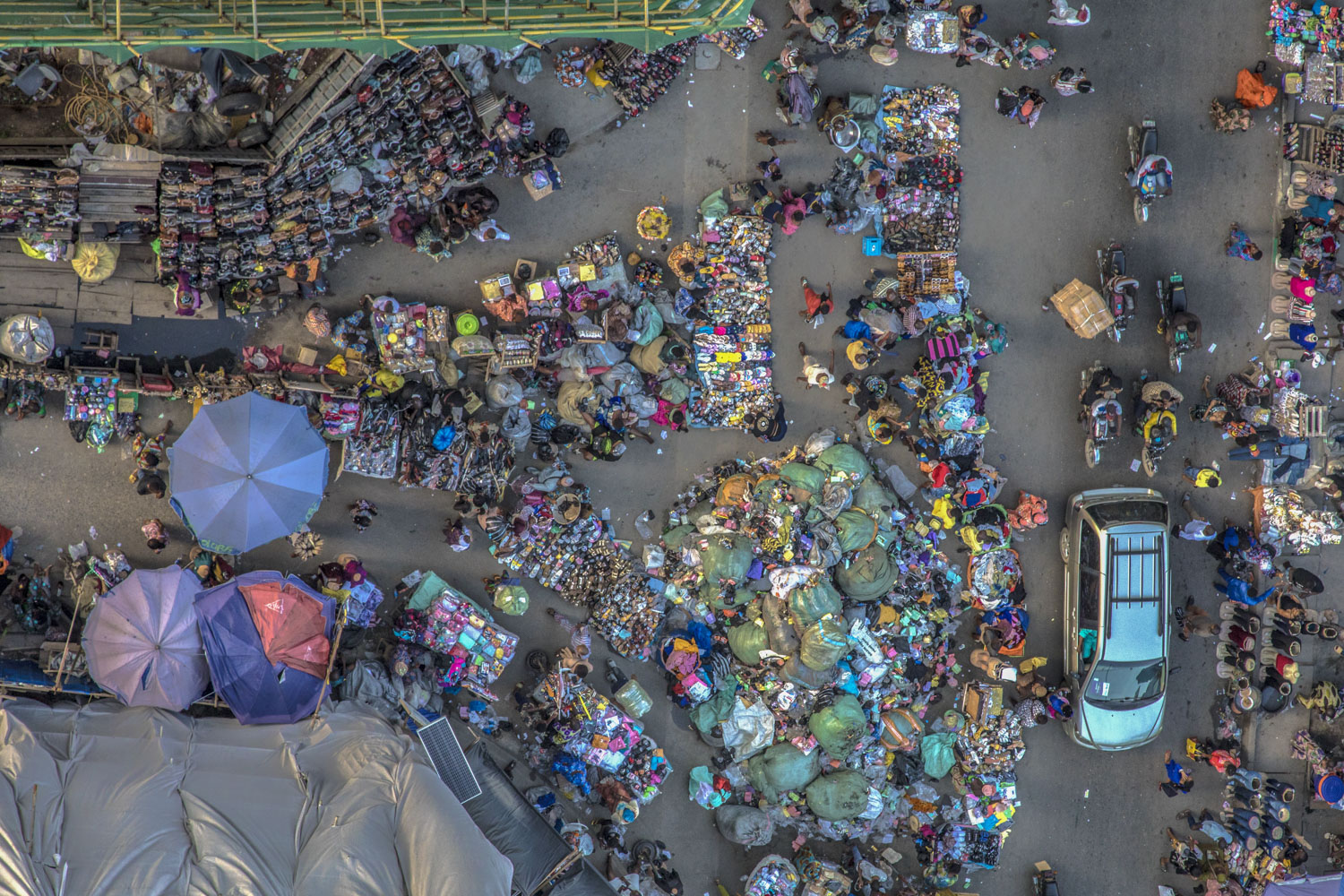
An aerial view of Lagos Island. By Andrew Esiebo
What are the three things in your everyday life that get you excited or make you happy
Reflecting on my photography career, which started as a passion and has taken me across the world, makes me happy. It has allowed me to meet people from different walks of life and, in some ways, make an impact. Spending time with family and friends and being able to work on projects that push my creative boundaries also excites me.
What’s a typical day in your life like?
A typical day could involve working in the field, doing post-production, spending time on house chores, and cooking (which I enjoy).
You enjoy cooking?
Yes now.
Interesting. Three fun facts about Andrew Esiebo that people don’t know?
I enjoy simple things, like hanging out with friends. When I do have the chance, I love going to the beach, visiting parks, and taking road trips. I also have a deep interest in art and culture-related activities.
If you weren’t a photographer, what other career do you think you’d have pursued?
I think I would have pursued a career in agriculture, tourism, or something related to a nature-based career.
Thank you for being on Doing Life With…, Andrew
__
Many thanks to Andrew Esiebo for having this conversation with us and answering all our questions – and swiftly too, we must add.
Do you love this content, have any feedback for us or want to be a BellaNaija Features contributor? We’d love to read from you. Shoot us an email: features@bellanaija.com. Join us on Saturday for the next episode!
The post Read How Photography Became A Way of Life for Andrew Esiebo in Today’s “Doing Life With…” appeared first on BellaNaija - Showcasing Africa to the world. Read today!.
from BellaNaija https://ift.tt/PWGeMR8
via IFTTT
